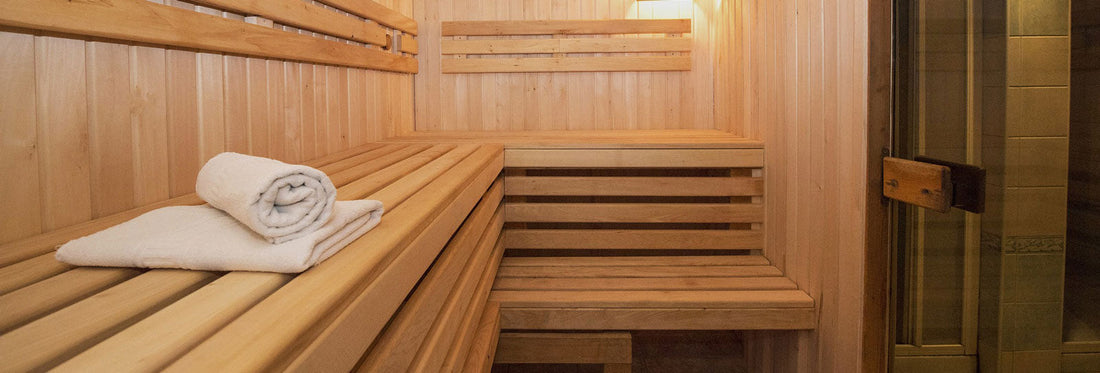Some athletes and gymgoers swear by hot sauna sessions after a hard workout, while others prefer taking regular cold plunges in an ice bath. If you’ve never tried either, you may wonder which option to add to your post-workout recovery routine. How do these two popular recovery methods help, and is one better than the other?
How Do Saunas Aid in Post-Workout Recovery?
Many gyms have saunas or steam rooms where exercisers can relax after a workout, and the practice is very popular with high-level athletes, too. A recent study of Russian endurance athletes found that 96.7% incorporated sauna bathing into their routines. Research suggests that sauna use is popular for good reason.
A small study of male distance runners found that post-exercise sauna bathing resulted in better endurance during the next workout. Another study found that men who used a sauna after endurance exercise had better short-term leg recovery than non-sauna users. Some research suggests that sauna use can help reduce pain and stiffness in people with chronic musculoskeletal diseases, so it might also be helpful for post-workout discomfort.
However, other studies have reported less promising results from sauna use. A study of competitive swimmers and triathletes found that post-exercise sauna sessions led to significantly decreased performance in the pool.
Traditional saunas heat the air, and may or may not incorporate steam. Infrared saunas are an alternative to traditional saunas that use light to heat your body, not the air around you. The latter could be a good choice for people who want to use saunas for post-workout recovery but find the high heat of traditional saunas uncomfortable.
How Do Ice Baths Aid in Post-Workout Recovery?
Cold water bathing has a long history. The practice has been used for millennia for its potential health benefits, and today, athletes and gymgoers alike use cold water immersion to help their bodies recover from a hard workout. There’s extensive scientific research to support the use of cold water in a post-workout recovery routine.
A systematic review of the evidence behind various post-exercise recovery techniques reported significant benefits from cold water immersion. Not only does the research show that ice baths significantly reduce perceived fatigue, but they also reduce the delayed onset muscle soreness (DOMS) that can follow a strenuous workout. The authors note that cold exposure is one of the most powerful techniques for reducing post-workout inflammation, while a massage was the best for DOMS.
The beneficial effects of cold water immersion can be long-lasting. Some research has found that taking an ice bath after a workout can reduce muscle soreness for as long as 96 hours after a workout. This can help you get back to the gym after a hard workout or keep pushing yourself during a multi-day competition.
Cold Shock Proteins and Heat Shock Proteins Explained
How do both saunas and ice baths help with post-workout recovery? Cold shock proteins and heat shock proteins may play a role. These are stress proteins your body produces when you’re cold or hot.
Heat stress happens when your body can’t get rid of excess heat and your temperature rises. Research suggests that heat shock proteins can be produced when your body reaches temperatures considered a fever: 38-41°C (100.4-105.8°F). This could happen when you sit in a sauna. Science has identified a few important roles that heat shock proteins play in the body, including:
- Helping cells regenerate.
- Repairing damage.
- Protecting against tissue injury.
While heat shock proteins are well known to science, cold shock proteins are an emerging research area that’s not yet well understood. Current science shows that they may help your body maintain its muscle mass when you’re not as active as usual or when you’re cold. Some research suggests that cold shock proteins can promote muscle growth and recovery from exercise.
While heat shock proteins are released during periods of heat stress, cold shock proteins may be released during less physically stressful conditions. Current knowledge of cold shock proteins shows they can be released when the body drops below 37°C (98.6°F), which is the average normal body temperature. So when you feel a bit chilly, you may be producing cold shock proteins.
Ice Bath vs. Sauna: What is the Best Recovery Method for You?
Research suggests that both saunas and ice baths can be a helpful addition to a post-workout recovery routine. No studies have compared the two recovery methods directly, so it’s hard to say which works best. Until more research is performed, you can choose the method you prefer or the method your trainer recommends for your sport. Of course, you could choose to use both!
Using both hot and cold post-workout recovery methods is known as contrast therapy. This therapy borrows from the longstanding Finnish tradition of following a hot sauna session with a refreshing cold plunge. Some athletes start by soaking in warm water while others relax in a hot sauna. Immediately afterward, they cool off in an ice bath.
Take a Post-Workout Cold Plunge With Ice Barrel
Whether you want to try cold water immersion on its own, or pair it with hot sessions in the sauna, Ice Barrel can help. The purpose-built cold therapy tool makes taking an ice bath easy and convenient. Simply fill your barrel with ice and water to reach your desired temperature (we recommend about 10-15°C or 50-59°F), then enjoy a relaxing soak for 5 to 10 minutes.










